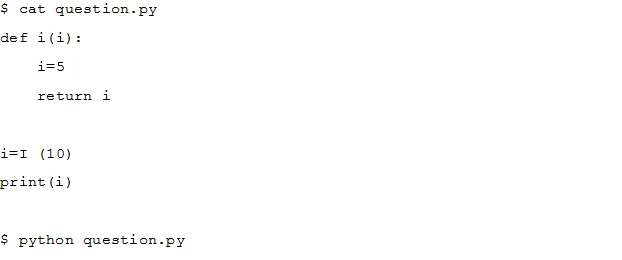

The code creates two sets, a and b, containing the specified strings. The update method on a adds all elements of set b to set a. Since sets are unordered collections in Python, the final contents of a will be all unique items from both sets a and b. Therefore, the contents of variable a are 'dandelion', 'rose', 'cat', 'violet', 'bird', and 'dog'.

The code provided in the image is incorrect because functions in Python are case-sensitive. The function 'i' is defined with a lowercase 'i', but the call is made to 'I' with an uppercase 'I', which is not defined. This results in a NameError, indicating that 'I' is not defined. Therefore, the error can be described as a function override issue where the function 'i' is assigned but not called correctly.
>>> print(bin(0b101010 ^0b111000))
The code uses the 'bin' function to convert the result of a bitwise XOR operation between two binary numbers into a binary string. The XOR operation (^) compares each bit of the two numbers and returns 1 if the bits are different, and 0 if they are the same. For 0b101010 (which is 42 in decimal) and 0b111000 (which is 56 in decimal), the result of the XOR is 0b010010, which is represented as 0b10010 in binary. Therefore, the output is 0b10010.
[65, 66, 67, 68]
The correct option is the one that uses `map(ord, 'ABCD')`. The `ord` function returns the Unicode code point for a given character. Thus, `map(ord, 'ABCD')` converts each character in the string 'ABCD' to their respective Unicode code points, resulting in the list [65, 66, 67, 68].
The output of the ls(TCP) function typically provides a list of all the fields associated with the TCP layer. These fields include attributes and default values that can be set or inspected within the TCP layer of a packet. Therefore, the correct answer is that it lists all of the fields associated with the TCP layer.